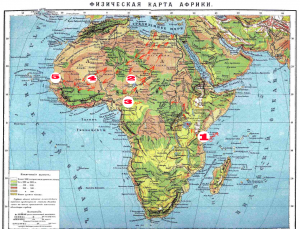Jules Gabrielle Verne
- Years of life: 1850-1905
- He lived in France in Nantes,
- In total, Jules Verne wrote 66 novels, including unfinished ones, published – at the end of the 20th century, as well as more than 20 novels and short stories, more than 30 plays, several documentary and scientific works.
- Jules Verne also traveled to England, Scotland and Scandinavia, visited many other countries and cities.
- Despite the loss of vision at the end of his life, he continued to write books.
- He is a favorite writer of the character of the film “Back to the Future” by Dr. Emmett Brown.
I found suitable maps in Yandex.Pictures and schematically marked the route in sai.
I marked the most important points of travel with numbers, here are the results:
Twenty Thousand Leagues Under the Sea
1. Paris
2. Suez Canal
3. Crespo Island
5. Hawaii
6. Timor Island
8. Sargasso Sea
9. Norway
1 league is 5.55600 km, so the total length of the trip was 111 120 kilometers.
The Earth’s equator is 40,075 km long. It turns out that the Nautilus circled the globe almost three (2.77) times.
The plot: Three people go to explore Africa, cross the mainland from east to west. Starting from the Zanzibar archipelago and ending near the mouth of the Senegal River, using a balloon.
During travelling, the heroes of the novel discover the origins of the Nile (the longest river in the world). They save the missionary from the tribe who was going to sacrifice him. Fly over the Sahara. Condor is attacked, and one of the team members falls out of the ball, after a while they find it and save it. When the ball began to deflate, they barely escaped from the troops overtaking them.
On the map (No. 2) the main points of travel are marked.
First, I drew a route on the map myself. What happened is in the figure below, then I found a more accurate map, on the screenshot.
Key points of the trip:
1. Zanzibar
2. Lake Chad
3. Yola
4. Agadez
5. Near the river Senegal. The end of travelling.
Interesting facts about this novel:
- The book describes Central Africa as a desert, although it is actually a savannah.
- The total distance traveled by travelers is 29 720 km (taking into account the sea route from France to Zanzibar)
- Initially, balloons were called balloons. This name is made up artificially from two Greek words – “aer”, which means “air”, and “statos”, that is, “standing, motionless” (in English the name became popular – ball).
- The novel opens a series of books describing travels in different elements, in this case – by air (“20 thousand lees under water” – in water, “Around the world in 80 days” – on land and water, “Around the Moon” – in space)
- The balloon, as a way of traveling, was chosen due to the lack of roads on the continent and allowed us to calmly conduct observations.


